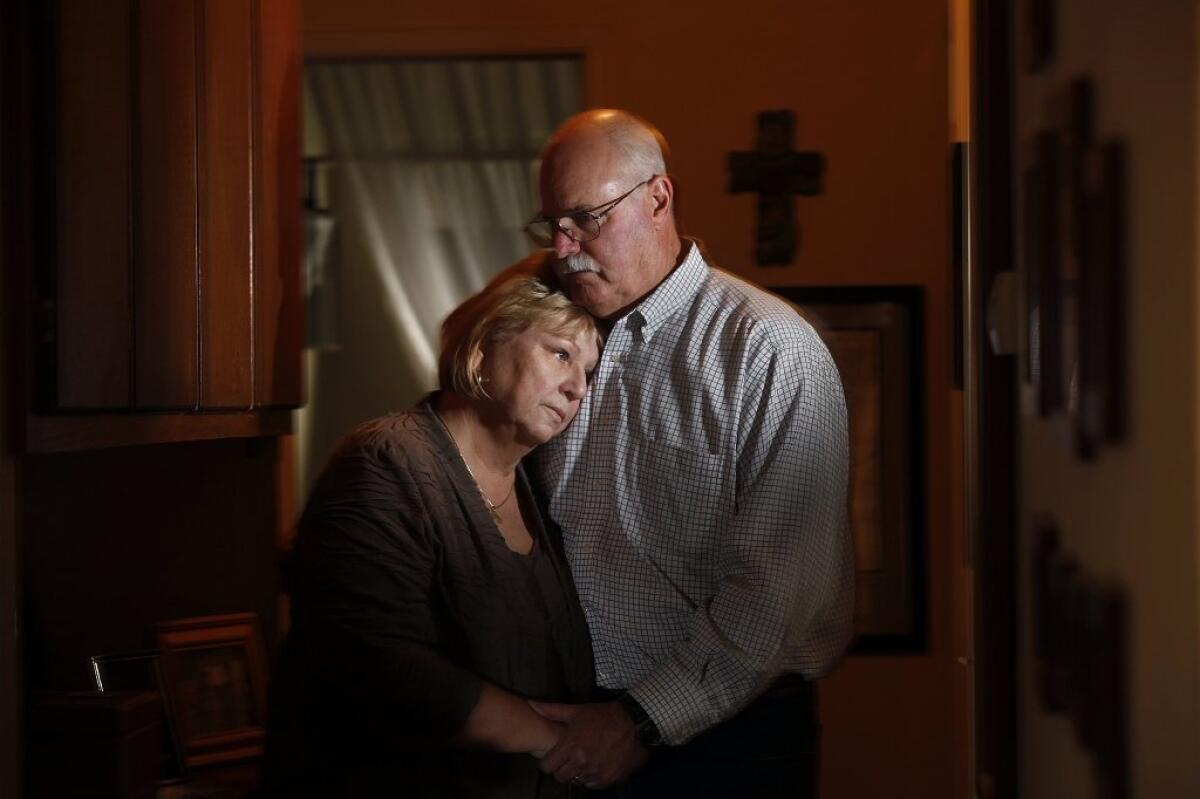A misunderstood statistic: 22 military veteran suicides a day

- Share via
In most discussions of suicide and the wars in Iraq and Afghanistan — including the online buzz that followed publication of a Times analysis on how young California veterans die — one statistic gets repeated most: 22 veterans kill themselves each day.
That number comes from a study published in early 2013 by researchers at the federal Department of Veterans Affairs. But the recent wars were not the study’s primary focus. In fact, they play a minor role in veteran suicides overall.
The VA researchers used death records from 21 states to come up with a 2010 national estimate for veterans of all ages. As a group, veterans are old. Military service being far rarer than it was in the days of the draft, more than 91% of the nation’s 22 million veterans are at least 35 years old, and the overwhelming majority did not serve in the post-9/11 era.
About 72% of veterans are at least 50. It is not surprising, then, that the VA found that people in this age group account for 69% of veteran suicides — or more than 15 of the 22 per day.
Many experts believe that the farther a veteran is from military service, the less likely it is that his or her suicide has anything to do with his or her time in uniform. In other words, many older veterans are killing themselves for the same reasons that other civilians in the same age group kill themselves: depression and other mental health problems coupled with difficult life circumstances.
The VA analysis does not attempt to determine rates of veteran suicide or how they compare with rates for people who never served. Those are surprisingly difficult questions to answer, mainly because the government does not systematically track service members after they leave the military.
The Times tackled the problem using data on California deaths from 2006 to 2011, the most recent six years available. Rather than focus exclusively on suicide, the analysis considered all 42,734 deaths of adults under 35, a group that includes those veterans most likely to have served in the recent wars.
In addition to the cause of death and a variety of other information, each record includes a box indicating veteran status. In the course of reporting, it became clear that the local coroners and funeral home directors who fill out the forms also use that box for active-duty deaths. The Armed Forces Medical Examiner System provided data on active-duty deaths in California by age, gender and cause, allowing The Times to subtract those figures and arrive at the veteran totals.
The VA provided the California veteran population estimates that The Times used to calculate overall death rates and break them down by cause. The death rates for other civilians were determined using population data from the U.S. Census Bureau.
One more step was required to make the comparisons relevant. California veterans under 35 are about 80% male, and nearly half are over 29. A straight comparison to the general population in that age group would be less than ideal, since suicide and accident rates vary significantly by gender and age.
The Times adjusted the non-veteran death rates so they reflected the age and gender mix of the veteran population.
As the story explained, suicide and accident rates were substantially higher for veterans. Over the six years examined by The Times, 329 California veterans under 35 took their own lives. That amounts to an average annual rate of 27 suicides per 100,000 veterans.
If that rate were to hold true across the country, about 530 young veterans are committing suicide each year — roughly 1.5 each day.
That’s probably an underestimate, because there are regional variations in suicide and California tends to fall on the low side. But in talking about the aftermath of the wars in Iraq and Afghanistan, it’s far closer to reality than 22 each day.
Twitter: @AlanZarembo
ALSO:
HIV infection causes immune cells to self-destruct, study says
Are e-cigs a tobacco problem or part of the solution?
How do Americans waste $28 billion a year? On vitamins, doctors say







